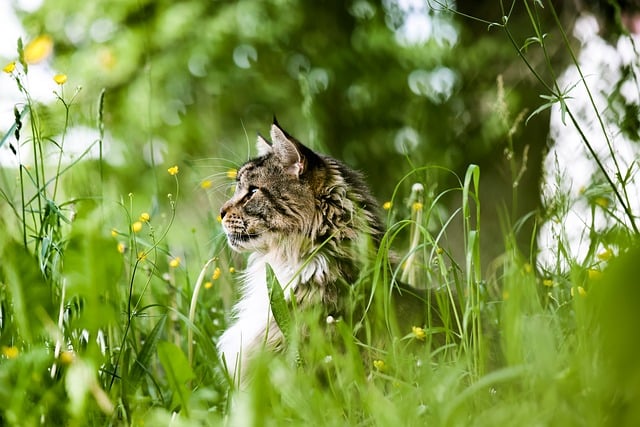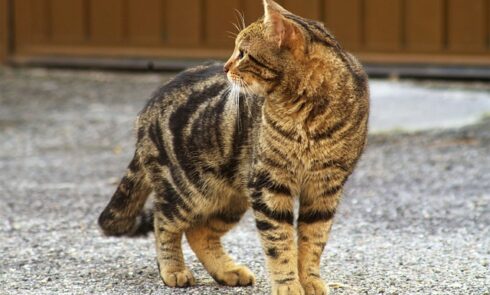In the realm of feline health, the importance of flea treatment can hardly be overstated. It takes on an even greater magnitude when one considers that New Zealand is a hotspot for some of the world’s most tenacious and widespread flea populations. When left unchecked, these pesky parasites not only cause discomfort by way of itching and skin infections but are also potential carriers of harmful parasites like tapeworms – all detrimental to your cat’s overall thriving existence.
Thus, making it a priority to select the finest cat flea treatments available in NZ should be at the topmost part of every pet owner’s list. The application of consistent and potent flea treatment methodologies can dramatically diminish these lurking health dangers, secure your pet’s comfort zone and significantly uplift their life quality.
A holistic approach towards flea management goes beyond merely handling a current infestation; it emphasizes prevention as much as cure – providing proactive solutions designed to shield our beloved feline friends from harm while nurturing their wellbeing.
Exploring Different Flea Treatment Options Available in New Zealand
In the verdant lands of New Zealand, those who call pets their companions are bestowed with a plethora of potent solutions to combat flea infestation. Amidst this wide array of resolutions, the 3-month long treatment for feline pals emerges as an imperative selection for many. This modality proves itself formidable owing to its prolonged protection span that mitigates the probability of recurrence due to its unrelenting efficacy. The regime not only liberates our furred friends from existing fleas but also staunchly guards against any forthcoming invasions, hence becoming a preferred option among numerous Kiwi pet guardians.
A question that recurrently surfaces amidst discussions is – “What embodies the 3 month flea treatment for cats in NZ?”. To put it simply, it signifies a distinct medicinal regimen or therapy blueprint engineered to shield against fleas over an extended three months duration. These treatments commonly manifest themselves as spot-on antidotes, oral tablets or injections. A significant proportion of these enduring therapies function by interrupting the life cycle progression of fleas thereby offering sustained and effective fortification. By comprehending the diverse plans at disposal within New Zealand’s territory, cat owners can pave their way towards informed decisions best aligned with their furry partner’s unique requirements.
Assessing the Efficiency of Topical Flea Treatments

The realm of pest control for felines is often dominated by the frequent deployment of topical flea treatments. Known for their efficacy in thwarting the life cycle development of these pesky parasites at varying stages, these methods are perceived as effective artillery against an imminent infestation eventuality. Most compellingly, when aptly administered, they morph into a shield against fleas and exhibit effectiveness within a temporal frame extending to not more than 12 hours. The resilience that characterizes them allows an ongoing assault on fleas several weeks post-application.
However, like most things in existence with vast appeal and proven efficiency indices, topical flea treatments do face turbulence. Uncomfortable signs or dermal agitation may surface post-application in certain feline subjects due to heightened sensitivity levels. Further clouding their efficacy index is the fact that any contact with water shortly after application could potentially counteract its benefits – owing largely to most such treatments lacking waterproof attributes. Consequently, it becomes imperative for caregivers to take into account specific lifestyle facets of their ward before choosing topical flea treatments as preferred combat gear against pests.
The Role of Oral Medications in Flea Control for Cats
The advent of oral medications has indeed catapulted the arena of flea control for our feline friends into an epoch, rendering a holistic redressal to these vexing invasions. These potent concoctions, often acting with swift efficacy, are engineered with a singular focus – derailing the life cycle of fleas. A majority of such orally administered drugs bear formulation designed to exterminate adult fleas and put a decisive end to their reproduction process – an effective countermeasure in curbing this problem from spiraling out of control. The form factor is another highlight – tablets that can either blend seamlessly into your cat’s meal or be given directly; thus ensuring administering them remains bereft of stress.
A standout benefit accompanying these oral medications is their ‘discreet’ nature – they leave no trace behind. This stands in stark contrast against topical treatments which may potentially trigger complications like skin irritation among sensitive cats due to residue leftover on fur. Oral medications present themselves as a safer alternative owing primarily to this characteristic trait. Homes housing small children or other pets too find solace in this solution as it diminishes any risk associated with inadvertent ingestion during grooming sessions or playtime activities involving your furry companion.
Yet caution must remain paramount! Never embark upon introducing any new medication without first obtaining professional advice from your vet so as to ensure its appropriateness considering your pet’s unique needs and prevailing conditions.
Natural Alternatives in Treating and Preventing Fleas
In the mystifying universe of cat flea management and therapy, an escalating section of pet custodians are plunging into the exploration of natural substitutes. The charm these nature-derived therapies wield primarily resides in their safety dossier, a characteristic that enables them to sidestep potent chemicals hence presenting less potential for adverse effects or allergic responses. Numerous individuals harbor preference towards employing such organic methodologies to assist their animal companions in overcoming the discomfort and possible health hazards instigated by flea invasion.
Worth noting is that some generally acclaimed natural measures combating fleas involve utilizing essential essences like lavender, eucalyptus, tea tree oil; herbs known for flea warfare such as rosemary and peppermint; along with apple cider vinegar and diatomaceous earth. These varied substances operate diversely either to dissuade fleas from conquering a cat’s fur kingdom or annihilate existing colonies of these pests. However, while these natural alternatives might bear fruit in certain scenarios, they necessitate cautious administration—always prudent to seek counsel from a veterinarian prior to initiating any novel treatment protocol for your cherished pet.
The Benefits of Flea Collars for Cats
Flea collars for cats, a gateway to an advantageous solution that pet owners can seek when in need of comprehensive and continuous flea protection. The primary benefit waltzing its way through the discourse is their long-lasting efficacy – with these collars around the necks of your feline friends lasting up to a lengthy eight months, it irrevocably eradicates the requirement for monthly treatments. Such longevity not only guarantees constant security against fleas but also contributes significantly towards their cost-effectiveness – a boon indeed! Furthermore, we mustn’t forget about their nature as an ideal non-messy alternative to topical treatments.
Beyond just practical benefits, there’s more than meets the eye with many of these flea collars for cats. They extend an additional layer of defense against ticks, lice, mosquitos, and other biting insects that have made themselves unwelcome guests. This wide-ranging shield becomes invaluable in regions where such pests are rampant – assisting greatly in enhancing overall health safety for our feline residents. Moreover, they carry design elements that focus on being light and comfortable for cats ensuring minimal disturbance or discomfort so your pet stays undisturbed! Thusly put forth into words then, flea collars present themselves as an all-encompassing economical viable choice; a convenient resolution supporting our endeavour in maintaining a flea-free environment for beloved cat companions.
- The prime advantage of flea collars for cats is their long-term effectiveness. These collars can last up to eight months, eliminating the need for frequent treatments and providing steady protection against fleas.
- Flea collars are cost-effective. Their prolonged lifespan makes them a more economical option compared to other methods that require regular application or visits to the vet.
- They offer a clean solution to flea control. Unlike topical treatments which can be messy and cause discomfort, flea collars are easy-to-use and hassle-free.
- Flea collars provide an extended defense mechanism against not just fleas but also ticks, lice, mosquitoes, and other biting insects. This becomes particularly beneficial in areas where such pests are prevalent.
- Besides being effective in pest control, these collars are designed keeping cat comfort in mind. They’re lightweight causing minimal disturbance or discomfort ensuring your pet stays undisturbed while wearing it.
- Ultimately, flea collars present themselves as an all-inclusive economically viable choice; they serve as a convenient resolution supporting our efforts in maintaining a safe and healthy environment for our beloved feline companions.
In conclusion, investing in a good quality flea collar provides numerous benefits from prolonged protection against various pests to contributing towards overall health safety of your pet while being light on your pocket too!
An In-depth Look into Flea Injections for Cats
Isoxazolines, with their scientific moniker being a mouthful, are the potent essence of flea injections. Here’s an intriguingly advanced modality for managing those pesky fleas on our feline companions, administered by skilled hands in the field of veterinary science. These injections serve as a robust bulwark to disrupt the relentless progression of the flea life cycle, providing enduring protection that spans over numerous months.
The active constituent within these injections zeroes in meticulously on the flea’s nervous system. This precipitates paralysis and ultimately leads to their demise – an endgame that has seen this treatment method surge in popularity given its protracted duration and commendable efficacy.
Yet one cannot overlook potential caveats – while riddled with undeniable benefits, there might be some transient side effects post injection like appetite loss, diarrhea or lethargy afflicting some cats. In infrequent cases rarer still, severe reactions such as seizures may arise. It is critical to underscore however that these adverse effects are largely outliers; most cats bear up well under these injections.
Veterinary savants concur broadly: they deem that the potential gains from these anti-flea inoculations tip scales heavily against any sporadic side effects.
FAQ
The imperative of flea intervention in felines stems from the urgency to avert infestations, alleviate discomfort spawned by flea bites, and circumvent potential health complications such as flea allergy dermatitis, tapeworm afflictions, and anemia.
Within New Zealand’s borders, those who possess cats have access to an assortment of options including topical applications, orally administered medications, natural alternatives like essential oils or combs designed specifically for fleas.
Topical solutions prove highly efficient as they exterminate adult specimens alongside larvae and eggs – offering a holistic solution. However their potency can be swayed by variables such as the cat’s wellbeing status, lifestyle habits and intensity of infestation present.
Orally delivered medicinal treatments act swiftly to eliminate matured specimens hence halting their life cycle progression. They may be independently used or combined with other strategies ensuring comprehensive control over flea populations.
Yes indeed! Alternatives derived from nature such as select essential oils or diatomaceous earth can serve effectively towards treating existing cases while preventing future invasions by these pests. However it should be noted that effectiveness varies depending on severity level.
Flea collars deliver enduring protection lasting several months usually making them easy-to-use cost-effective means for ongoing prevention initiatives against these pesky parasites
An injectable flea treatment, an example being the Program injection, dispenses medication directly into feline bloodstream hence inhibiting hatching process in eggs. It delivers long term control usually spanning six months.
As with all medicines side effects aren’t uncommon. Often observed ones include skin reactions at puncture site, lethargy or appetite loss. Always seek veterinary consultation before commencing new treatment regimes
Usually designed for semi-annual protection schedules frequency might vary depending on product specifics and vet’s professional opinion


